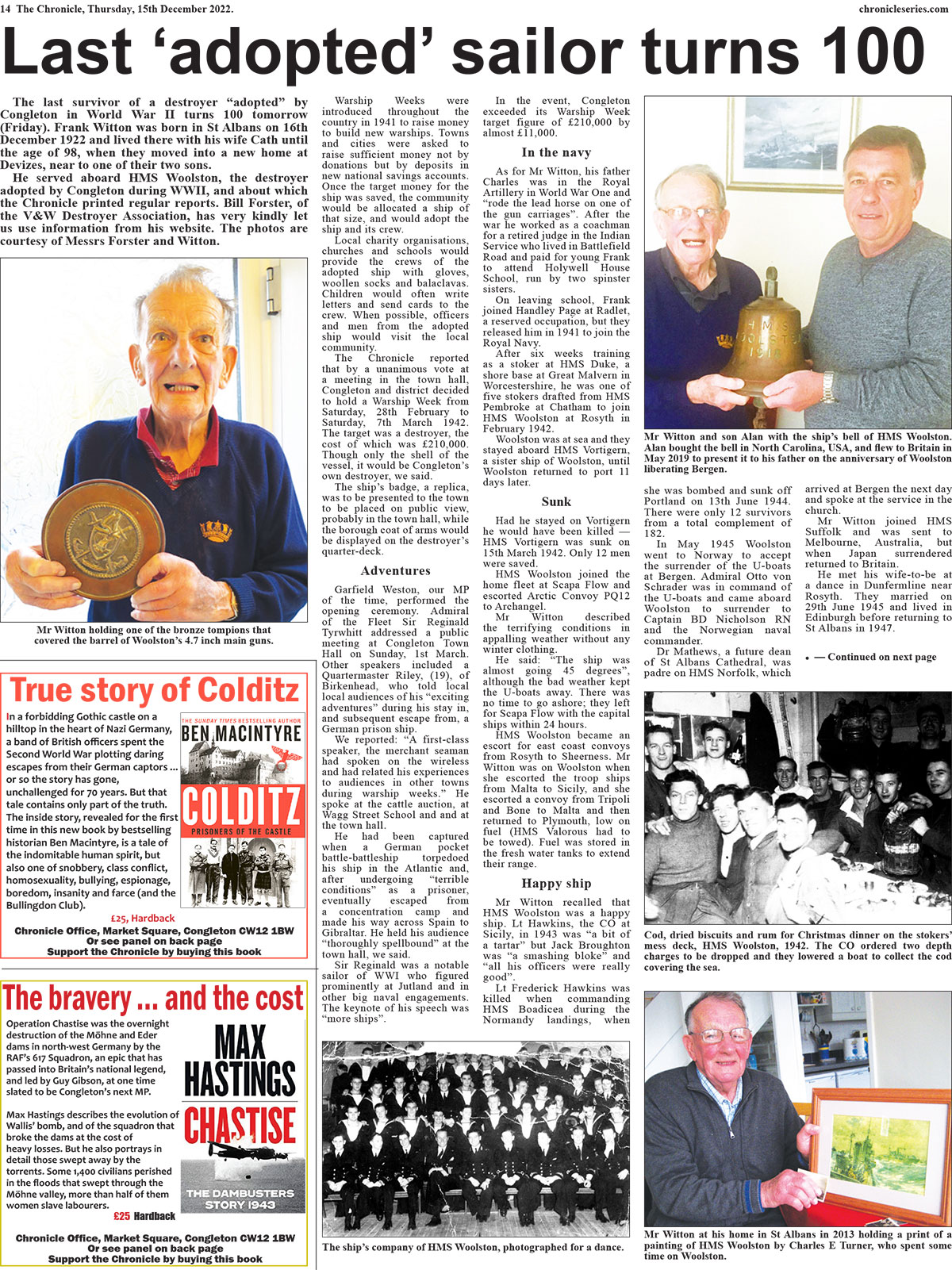
 HMS WOOLSTON
HMS WOOLSTON
Warship Weeks
Congleton adopts HMS Woolston
Warships Week 28 February - 7 March 1942
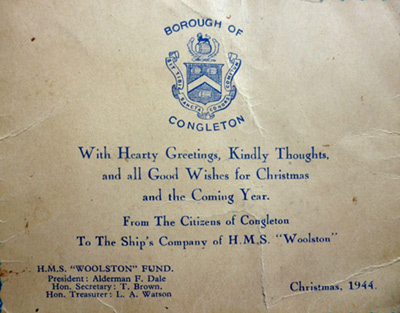 Warship
Weeks were introduced throughout the country in 1941 as a means of
raising money for the building of new warships. Towns and cities were
asked to raise sufficient money to pay by investment or deposit in all types of war savings for the cost of building the
hull of a new warship. Cities would aim to raise enough to adopt
battleships and aircraft carriers, while towns and villages would focus
on cruisers and destroyers. Once the target money for the ship was
saved, the community would be allocated a ship of that size and would
adopt the ship and its crew.
Warship
Weeks were introduced throughout the country in 1941 as a means of
raising money for the building of new warships. Towns and cities were
asked to raise sufficient money to pay by investment or deposit in all types of war savings for the cost of building the
hull of a new warship. Cities would aim to raise enough to adopt
battleships and aircraft carriers, while towns and villages would focus
on cruisers and destroyers. Once the target money for the ship was
saved, the community would be allocated a ship of that size and would
adopt the ship and its crew.
Local charity organisations, churches and schools would provide the
crews of the adopted ship with gloves, woollen socks and balaclavas.
Children would often write letters and send cards to the crew. When
possible, officers and men from the adopted ship would visit the local
community. The ship’s commanding officer would exchange plaques,
objects and photographs with the city or town that reached the target
set, and an adoption would begin. The number of warships adopted was
over 1200, and this number included the battleships, cruisers,
destroyers and trawlers.
The total amount raised for the war effort was £955,611,589. The
campaigns were organised by the National War Savings Committee with the
full support of the Admiralty. There were a total of 1,178 warship
weeks organised during the campaign’s duration, involving a total of
1,273 districts. A press announcement quoted the adoption of eight
battleships, four carriers, forty-nine cruisers, three hundred and one
destroyers, twenty-five submarines, one hundred and sixty-four
corvettes and frigates and two hundred and eighty-eight minesweepers.
Click on the link to see the towns and villages in Cheshire which adopted V & W Destroyers during 1941-2 and to find out more read the article on ‘National Savings and Warship Weeks’ by Dr Peter Schofield.
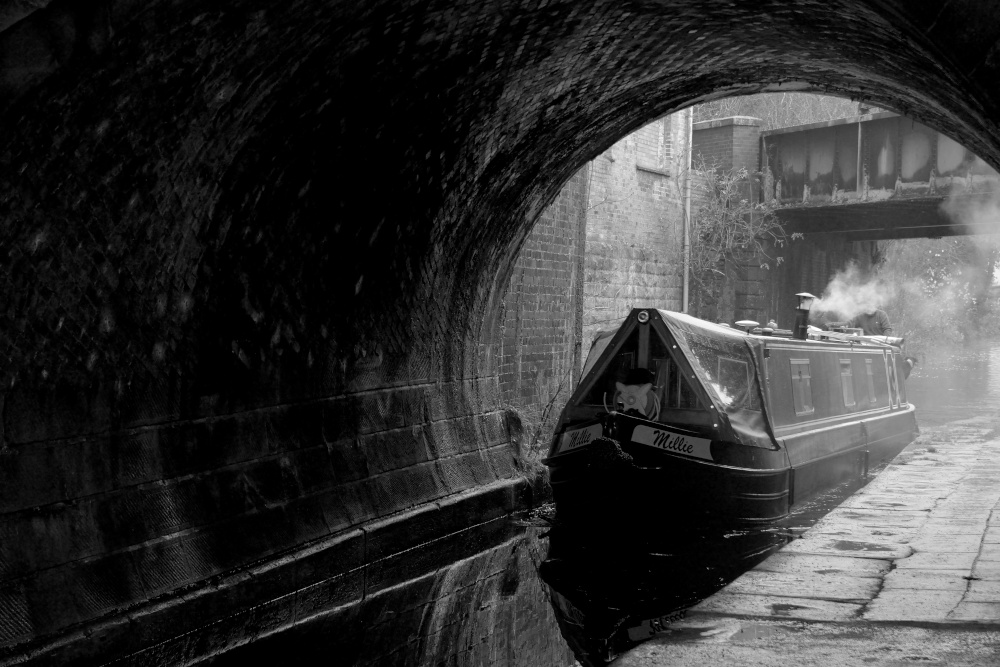
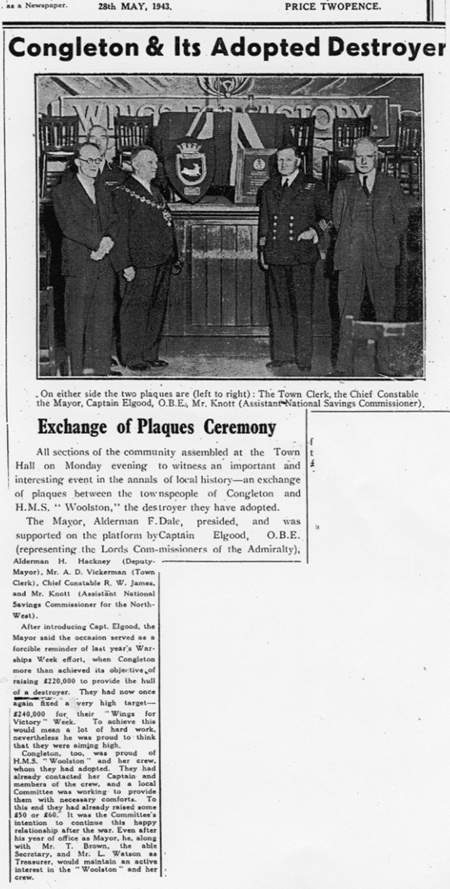 |
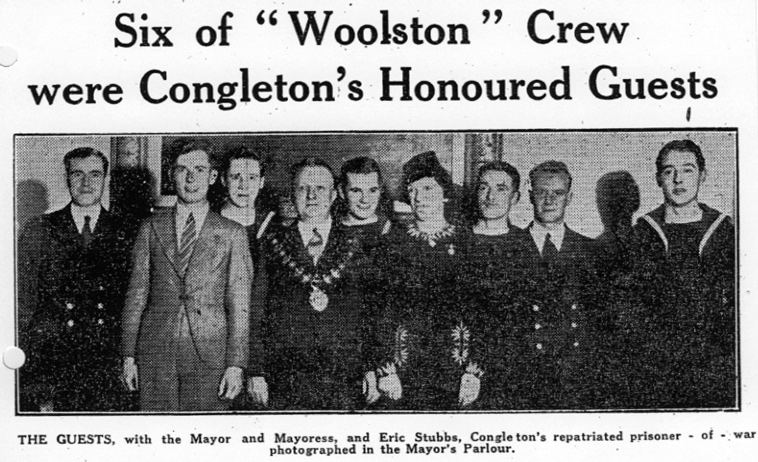 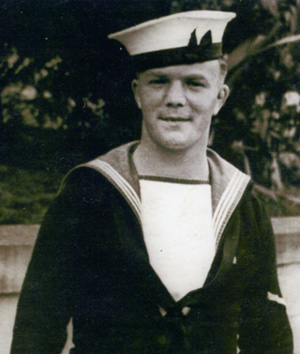 The Cheshire town of Congleton raised
£220,00, the cost of building the hull of a destroyer and adopted
HMS Woolston, a V&W Class
destroyer. The Cheshire town of Congleton raised
£220,00, the cost of building the hull of a destroyer and adopted
HMS Woolston, a V&W Class
destroyer.The local newspaper often reported stories about HMS Woolston. In May 1943 the town and her adopted ship exchanged plaques and six of Woolston's crew were honoured guests of the town in November 1943: "Two petty officers and four ratings from the crew of Congleton's adopted destroyer, HMS Woolston, were given a right good time when paying a four-days visit to their patron town last week. Arriving on Wednesday they lunched at their respective billets, were entertained at the Union Jack Canteen, and were later guests of honour at a tea and dance arranged at the Masonic Hall, Mill Street, by employees of Marsuma Ltd. Much of Thursday was spent in visiting and seeing textile operatives at work in various local mills. While at the Roldane Mill they stayed for lunch in the works canteen, and later saw the manufacture of cigars at Marsuma Ltd., the Meadows. In the evening the Mayor, Alderman F. Dale, the Chairman of the Woolston Comforts Fund Committee, officially entertained "our guests" in the Town Hall." Petty Officer Bill Neville met and
later married the daughter of Alderman Frank Dale, the Landlord of the Lord Nelson Inn, where he stayed on a visit to the
town. Bill Neville acquired the silver canteen from the wardroom of HMS Woolton (with the consent of the CO) before she was scrapped and it now belongs to his daughter who lives in Canada. And Jack Stubbs (on right), a renowned amateur prize fighter in
the North West who was born in Congleton and enlisted in the Royal Navy
in 1941, was posted to HMS Woolston
in 1944.
|
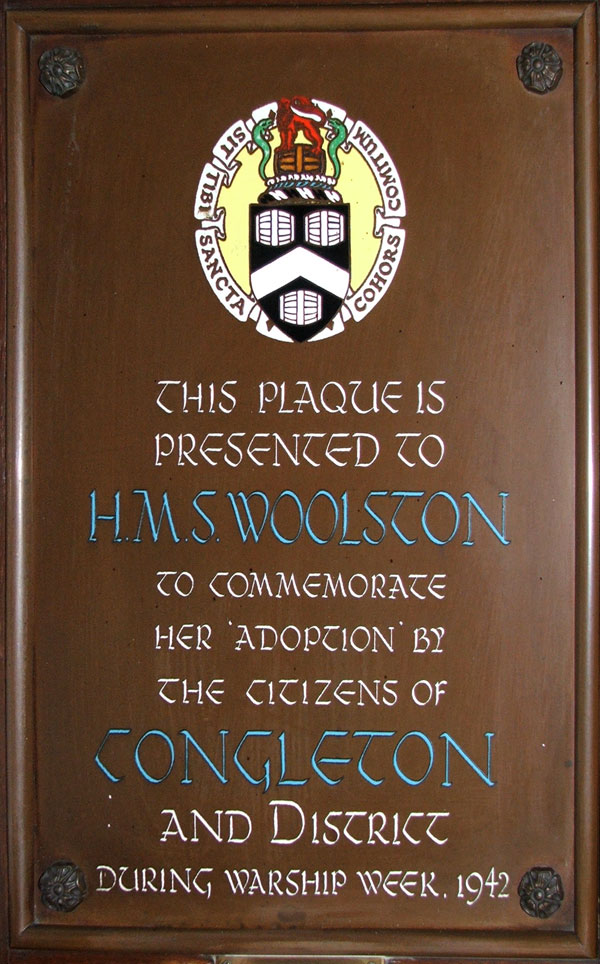 |
Congleton Chronicle 3 September 1943 Congleton's adopted destroyer, HMS Woolston,
was among the naval vessels which took part in the invasion of Sicily,
And celebrated her twenty-fifth birthday by escorting a convoy towards
the landing beaches. Once the ships were safely in, her job was to
patrol for lurking U-Boats and standby to give a blasting reception to
enemy aircraft which might try to interfere with the convoy.
"We thought things might be hot," said Lt E.C. Jones, RNVR, a chemist in peacetime, who came from Croydon. "But the only thing that really came up to expectation was the sun." Altogether, HMS Woolston spent nine days off Sicily. She opened fire at enemy aircraft many times and her log book reports the crashing of one enemy plane in flames. It was impossible to tell who had shot it down. From the time she left Britain until her return a few days ago, the Woolston steamed 7,000 miles and spent 60 out of 62 days at sea. It was not until she was on the last lap that her commanding officer, Leut. F.W. Hawkins, RN, told the ship's Company where they were going. Then over the loud speaker system he read an order of the day from Admiral B.H. Ramsay, "The capture of Sicily has been decided upon," he read. There was a cheer from the ship's company, and he read on: "You must continually bear in mind the fact that the Army is helpless and entirely dependent upon us until we establish them ashore, we did not let them down when we they retreated from Dunkirk, in Greece or Crete, and we will not let them down when they are advancing ... "We will not let them down"
The Woolston and the other ships of the Royal Navy made that their slogan. They did not let the Army down, and they look forward to a further opportunity of showing their fighting qualities." The Plaque with the coat of Arms of Congleton presented to HMS Woolston
The wooden shield bearing the ship's crest presented to the town has not been located Courtesy of Ian Doughty, Congleton Museum |

